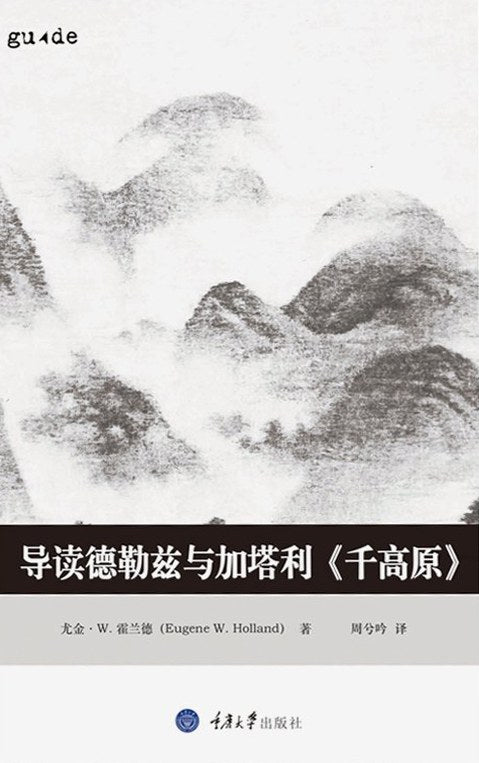1
/
of
1
An Introduction to Deleuze and Guattari's A Thousand Plateaus
An Introduction to Deleuze and Guattari's A Thousand Plateaus
Eugene W. Holland Zhou Xiyin 译
Regular price
$9.99 USD
Regular price
$9.99 USD
Sale price
$9.99 USD
Unit price
/
per
Low stock
Couldn't load pickup availability
About Book
About Book
Deleuze and Guattari's 'A Thousand Plateaus': A Reader's Guide
A Thousand Plateaus is a co-authored work by French philosophers Gilles Deleuze and Félix Guattari, and is one of their most important masterpieces. This book is an introduction to this classic.In the book, Eugene W. Holland first outlines the background of the writing of "A Thousand Plateaus" and gives an in-depth and easy-to-understand introduction to the theme of "A Thousand Plateaus"; in the most important part of the book, "Text Reading", the author breaks down the "problems" raised by the fifteen plateaus in "A Thousand Plateaus" into five categories, and elaborates on them one by one. The book is interspersed with quotations from the original book from time to time, showing the author's unique interpretation of this.
Deleuze and Guattari claim that the plateaus that comprise A Thousand Plateaus can be read in any order. Any reading of the entire book potentially yields a linear reading, just as every improvisation based on a chord chart yields one of many possible interpretations. So, let us follow the author's lead and begin an improvisational reading of A Thousand Plateaus. Remember, this reading is just one of many possible readings, not intended to extract the meaning of A Thousand Plateaus but to express and illuminate some of its potential.
A Thousand Plateaus is an extraordinary work. In the words of Deleuze and Guattari, it is written like a rhizome. The “problems” raised by the fifteen plateaus in A Thousand Plateaus can be broken down into five categories:
1. The epistemological question. How can thought function so as to think with the universe, rather than thinking about it, thereby accelerating the relative deterritorialization of our habitat, sometimes even reaching, with luck, an infinite rate of absolute deterritorialization, or "pure immanence"? The "Rhizome" and "Smoothness and Texture" plateaus deal most directly with this "problem," while parts of the "Nomadology" plateau deal with the differences between royal and nomadic sciences, and between axiomatic and problem systems. The goal is to develop a mental image best suited to grasping existence through becoming, reality through potentiality.
2. The ontological question. How can the universe and the life within it exist in such a way that they are both the result of change and always open to future change? How can we understand existence in terms of becoming, in terms of difference rather than identity, as a dynamic function of an open system? Most importantly, what are the benefits of understanding the world in this way? How does it provide us with better prospects for social change? The most direct and comprehensive approaches to this "problem" are the "moral geology" plateau and the "iteration" plateau—the former primarily dealing with the problem of the inorganic layer, while the latter primarily deals with the problem of the heterogeneous forming layer.
3. Anthropological Problems. The third category of problems can be called anthropological, but only in the structuralist (anti-humanist) sense of the term, concerning the "symbolic order": how does human life form symbolically occupy the heterogeneous morphogenetic layer; how is human social self-organization realized through and reflected in symbols—how is it realized through language, currency, and images? Here, the relevant plateaus are the "linguistic postulates," the "mechanics of the symbol," the "face," and the "capture device."
4. Ethical Questions. How can individuals organize themselves to achieve, with others, the most productive and enjoyable destratification possible? The most pertinent question here is, "How do you become a body without organs?" Plateau, however, also addresses ethical "questions" in "One Wolf or Some Wolves," "Three Short Stories," and "Becoming."
5. The political question. How can we understand human life as a social self-organization that can explain both herd behavior and herd (hunting pack) behavior, both repressive despotism and outward-expansionist economic imperialism, both the constraints of strict stratification and the escape of destratification? The "nomadic studies" and "micropolitics and segmentation" plateaus address this "problem" most directly, though many other plateaus also address it, albeit less explicitly.
Publication Date
Publication Date
2016-12-01
Publisher
Publisher
拜德雅丨重庆大学出版社
Imprint
Imprint
Baideya
Pages
Pages
216
ISBN
ISBN
9787568902168
share

